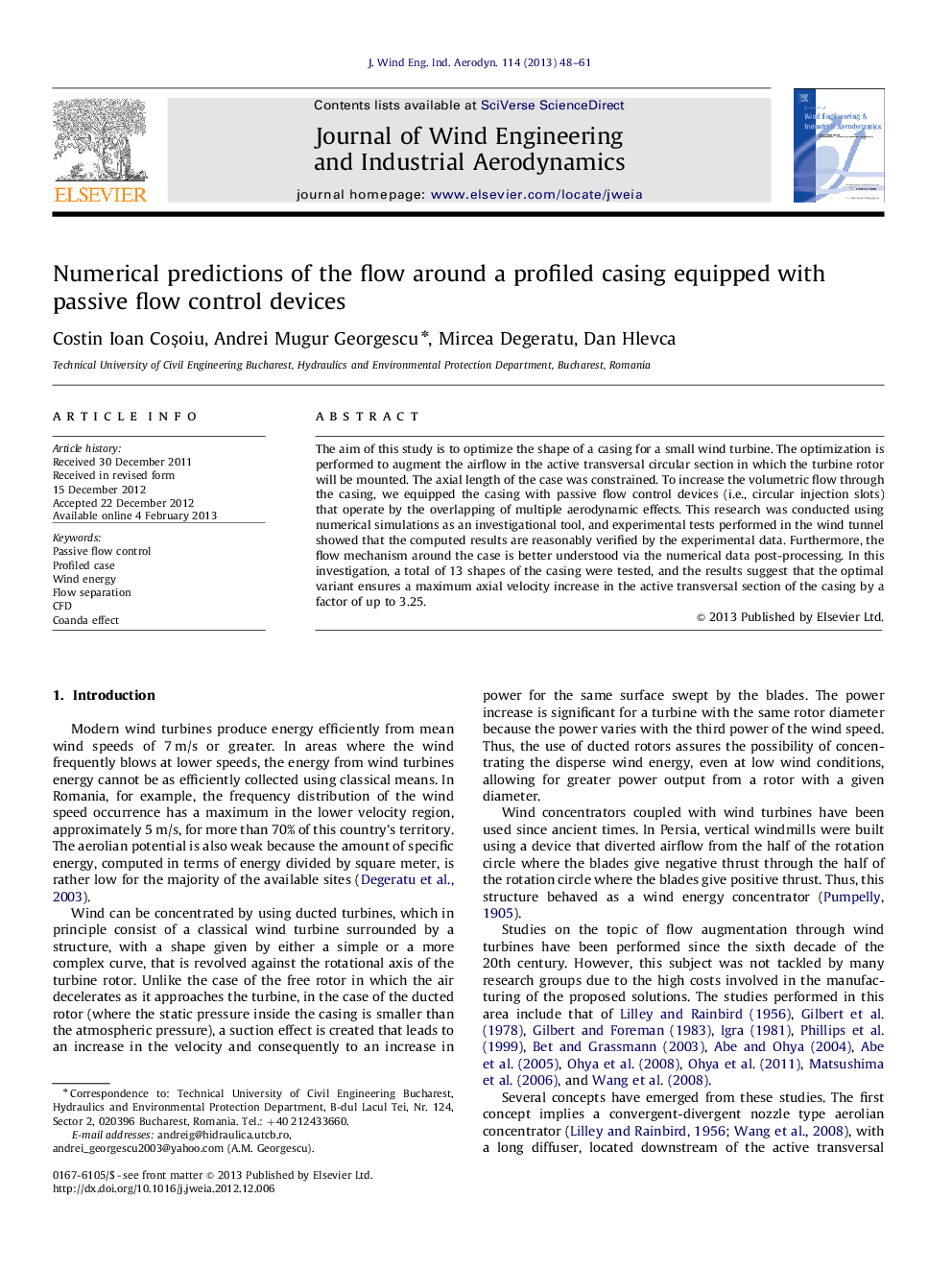| Article ID | Journal | Published Year | Pages | File Type |
|---|---|---|---|---|
| 292824 | Journal of Wind Engineering and Industrial Aerodynamics | 2013 | 14 Pages |
The aim of this study is to optimize the shape of a casing for a small wind turbine. The optimization is performed to augment the airflow in the active transversal circular section in which the turbine rotor will be mounted. The axial length of the case was constrained. To increase the volumetric flow through the casing, we equipped the casing with passive flow control devices (i.e., circular injection slots) that operate by the overlapping of multiple aerodynamic effects. This research was conducted using numerical simulations as an investigational tool, and experimental tests performed in the wind tunnel showed that the computed results are reasonably verified by the experimental data. Furthermore, the flow mechanism around the case is better understood via the numerical data post-processing. In this investigation, a total of 13 shapes of the casing were tested, and the results suggest that the optimal variant ensures a maximum axial velocity increase in the active transversal section of the casing by a factor of up to 3.25.
► A wind turbine casing is optimized to increase flow rate and reduce axial length. ► Passive flow control devices that overlap multiple aerodynamic effects are used. ► Numerical simulations are used to determine the optimal shape of the casing. ► Results show the contribution of each aerodynamic effect to performance increase. ► Flow mechanism around the case is better understood by numerical post-processing.
